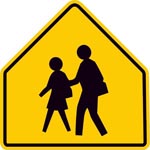Children, Youth, Families & Schools, Nebraska Center for Research on
Document Type
Article
Date of this Version
2020
Citation
Published in American Journal of Community Psychology 65 (2020), pp 160–172.
DOI: 10.1002/ajcp.12379
Abstract
The purpose of the current study was to examine the impact of exposure to Bringing in the Bystander—High School Curriculum (BITB-HSC) on school personnel, which included a seven session classroom curriculum for ninth through twelfth graders (student curriculum), a bystander training workshop for school personnel (school personnel workshop), and reading materials (handout). We examined how exposure to these various BITB-HSC intervention components was associated with school personnel’s knowledge and bystander efficacy, intentions, and barriers specific to student relationship abuse (RA) and sexual assault (SA). Participants were 488 school personnel from 12 high schools in upper New England who completed the 4-month follow-up survey that assessed for intervention exposure (284 participants completed both the baseline and follow-up survey). Whereas 53% of participants were exposed to no intervention components, the other half of the sample were exposed to a combination of intervention components. Higher baseline knowledge and reactive bystander intentions were associated with subsequent exposure to both the student curriculum and the handout, and fewer barriers to bystander action predicted exposure to the school personnel workshop. Exposure to the school personnel workshop, student curriculum, and handout was associated with subsequent greater knowledge, exposure to the student curriculum predicted reactive bystander intentions, and exposure to the handout predicted higher reactive bystander intentions and bystander efficacy. Findings suggest that despite challenges with engagement, exposure to the BITB-HSC components may be a useful tool in improving school personnel’s responses to RA and SA among high school students.
Included in
Bilingual, Multilingual, and Multicultural Education Commons, Child Psychology Commons, Counseling Psychology Commons, Developmental Psychology Commons, Early Childhood Education Commons, Educational Psychology Commons, Family, Life Course, and Society Commons, Other Social and Behavioral Sciences Commons


Comments
Copyright © 2019 Society for Community Research and Action; published by John Wiley & Sons. Used by permission.